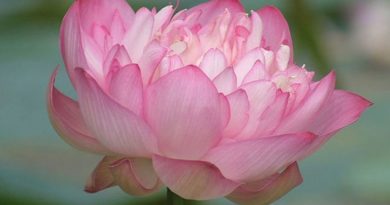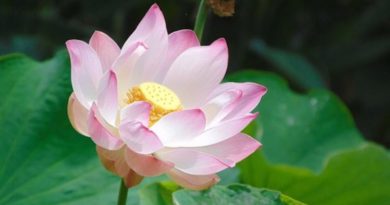A FISTFUL OF SAND – QUESTIONS & ANSWERS: THE BHIKKHUNI SANGHA
A FISTFUL OF SAND
QUESTIONS & ANSWERS: THE BHIKKHUNI SANGHA
Question: Please excuse me for asking this question, but from what I’ve heard you say, you feel that it’s all right for lay people to practice meditation if they want to, but those who are really intent on the practice, who really want to get full results, should ordain. But women don’t have the opportunity to ordain the way men do. So my question is why. When a woman gets good results from practicing concentration and insight meditation, she gains a sense of self-confidence. Yet when she sees that women no longer have the chance to ordain as they did in the time of the Buddha, it destroys her self-confidence.
Ajaan Suwat: Please listen carefully, for this is an important matter that we should all be informed about.
Ordination is a ceremony that the Buddha laid down, both for the Bhikkhu Sangha and for the Bhikkhuni Sangha. When he had allowed women to ordain, there were many women who, on practicing the Dhamma, reached arahantship, some of them with special abilities like the Buddha’s famous male disciples. For example, the Buddha praised Sister Khema as foremost among the bhikkhunis in terms of her discernment, just as he praised Sariputta as foremost in discernment among the bhikkhus. He praised Sister Uppalavanna as foremost among the bhikkhunis in terms of her psychic powers, just as he praised Moggallana as foremost the foremost bhikkhu in terms of his psychic powers. For a long time afterwards, women continued ordaining and practicing the Dhamma, but for what reason I don’t know, they weren’t able to maintain their lineage all the way up to the present.
Now, the Buddha decreed that any man who wants to ordain must have a preceptor, and that there must be at least five members of the Sangha sitting in on the ordination. One of the Sangha members is agreed upon by the group as the person who will question the candidate concerning his qualifications, to see if he will be able to practice the Buddha’s teachings on becoming ordained. When all the Sangha members see that the candidate is qualified, they make a public announcement of his ordination.
The same requirements were laid down for the Bhikkhuni Sangha. The candidate has to have a bhikkhuni as her preceptor, and the Bhikkhuni Sangha has to question her concerning her qualifications. When they see that she is qualified, they admit her into the Bhikkhuni Sangha.
To govern the life of both Sanghas, the Buddha laid down rules and requirements, called the vinaya. In laying down these rules, it wasn’t the case that the Buddha called a meeting and laid them down all in advance. Only when an individual bhikkhu had misbehaved did the Buddha call a meeting of the Sangha to question the offender about what he had done. When the offender admitted his wrong-doing, the Buddha would lay down a training rule, one at a time. If someone else misbehaved in another way, the Buddha would call another meeting and add another rule. He continued doing this in response to the actual misdeeds of the bhikkhus.
The same held true for the bhikkhunis. If an individual bhikkhuni misbehaved, the Buddha would call a meeting of the Sangha, over which he would preside. When he had questioned the offender and she had admitted to her wrong-doing, he would lay down a rule to prevent that kind of behavior from being repeated in the future. As this happened many times — as members of the Sangha misbehaved in various ways, causing trouble in the Sangha — the Buddha kept adding more and more rules. After he passed away, no one knows why but there’s no report of the Bhikkhuni Sangha in the account of the First and Second Councils. The account of the Third Council reports that bhikkhunis were involved at that time, and some of them were sent to Sri Lanka. The bhikkhunis continued their ordination lineage for centuries after that, but for some unknown reason the lineage no longer exists in the present.
Now that there are no longer any bhikkhunis, there’s no way that women can simply become bhikkhunis on their own, for no one would dare certify that they’d be acting in line with the Buddha’s promulgations. There are no preceptors to train them, no Bhikkhuni Sangha to join. The requirements set down for women to ordain are that there must be a bhikkhuni to act as preceptor, there must be a bhikkhuni to question the candidate as to her qualifications, and there must be a quorum of bhikkhunis who agree to admit the candidate into the Sangha. Then they send someone to inform the Bhikkhu Sangha that the woman of this-and-this name has been ordained. When the bhikkhus are formally informed, then the candidate would count as a bhikkhuni, on an equal footing in the training with all the other bhikkhunis.
It’s right here that I would like to express my sympathy. Why weren’t the bhikkhunis able to maintain their lineage? If they had maintained their lineage, then women would be able to ordain just like men. No one would be able to stop them. After all, the Buddha gave his permission for women to ordain. This is why I feel sympathy for those who would like to ordain.
What I’ve said so far applies to the Theravadin tradition. The Theravadin Bhikkhuni Sangha no longer exists. The Mahayanists say that their bhikkhuni lineages still exist, but if you look at their behavior and practices, they’ve strayed very far from the vinaya. This is why the Theravadin tradition doesn’t recognize them as bhikkhunis. The Mahayanists say their way is right, but we don’t get involved in that discussion. If, on studying the matter, you feel conviction in the practice of the Mahayana bhikkhunis, that’s one opportunity for ordination.
Actually, ordination is simply a formality, a customary procedure in line with the rules of the Sangha. In the area of meditation, the Buddha didn’t forbid anyone — man or woman — from practicing. If you’re really convinced of the value of the practice, you don’t have to put on ochre robes in line with monastic customs. Once you’ve developed a correct understanding of the Buddha’s teachings — when you have strong conviction and want to practice the noble eightfold path in full — I’m thoroughly convinced that you can practice without having to put on monastic robes. You can go off on your own and practice to the point of developing the mindfulness and discernment needed to gain release from suffering. It’s said that if lay people reach arahantship, they can simply start wearing white, observing the eight precepts, and live apart from lay people in general. In this way, they can live out their full life span without any difficulty. Lay people can attain arahantship if they’re really firmly convinced and courageous.
Question: I’m glad to hear you say that, for I was under the impression that ordaining was supposed to be better than lay life in the area of the practice.
Ajaan Suwat: I’m in no position to give any opinion as to whether being ordained is better or not. We simply practice in line with the Dhamma and Vinaya laid down by the Buddha. We don’t claim to be better than anyone else.
There was once a person who asked the Buddha, “Do those who are able to reach nibbana exist only in the Buddha’s monastic Sangha, or are other groups of people able to reach arahantship as well?” The Buddha answered, “Anyone — no matter what group he or she belongs to — who practices correctly in line with the noble eightfold is able to reach nibbana.” This shows that lay people, if they practice correctly, can reach nibbana as well. So you can rest assured that the Buddha wasn’t prejudiced in any way.
Question: I never thought that the Buddha was prejudiced, just that the Theravadin tradition in its practice has been prejudiced against women.
Ajaan Suwat: The Buddha taught nothing but the truth. If something wasn’t true, he wouldn’t say it. He taught the Dhamma in such a way that anyone who contemplated it could confirm what he was saying. If there were things that other people, on consideration, couldn’t see or know, he wouldn’t teach them or lay them down as rules. This is why his teachings are sanditthiko, visible here and now. If people who listen to them practice correctly in line with them, they can see the truth of his every word for themselves. This way they can develop self-confidence.
Once, when the Buddha had come to a river, he picked up a fistful of sand and asked the monks who were following him, “Which is greater, this fistful of sand or the sand in all the rivers and oceans?” The monks answered, “The sand in the Blessed One’s fist is a small amount, lord. The sand in all the rivers and oceans is far more.”
The Buddha then responded, “In the same way, monks, those things that I have known with direct knowledge but have not taught are like the sand in all the rivers and oceans. The things I have taught are like this fistful of sand.”
Any teaching that was true but wouldn’t serve a purpose — in other words, things that his listeners couldn’t confirm for themselves — the Buddha wouldn’t teach. And he wouldn’t deceive the world by teaching anything useless or untrue. He taught only the genuine truth that his listeners could understand and confirm for themselves through the practice.
I’ve explained quite a lot already. When there’s a lot of speaking, there’s simply a lot of breath. My hope is that you all will learn from listening, in line with your mindfulness, and then take what you’ve learned and put it into practice so that it will serve a purpose. Even though it may not be much, my hope is that it’s enough to serve a purpose.
You’ve sacrificed a lot — your work, all kinds of things — in coming here to practice. Coming together like this doesn’t happen easily. Our interpreter has sacrificed his time, too, inspired by his sense that you want to practice. The organizer, Larry Rosenberg, has given a lot of his time and energy to the arrangements that have enabled us to come together to practice, out of a similar desire: the desire that all of you learn and practice the correct way to lead your lives, so that you’ll reach purity in line with the principles of the Buddha’s teachings — the same teachings he taught his disciples in the past, so that they too were able to reach purity. The teachings of the Buddha are still with us. Those of us in the present should listen to them and put them into practice so as to serve a purpose, just like the people in the past. That way we’ll find happiness and prosperity in our lives.
So I ask that you remember what you’ve learned here, contemplate it, and put it into practice so that all of you — each and every one — will benefit in line with your aims.
That’s enough for now, so I’ll ask to stop here.








